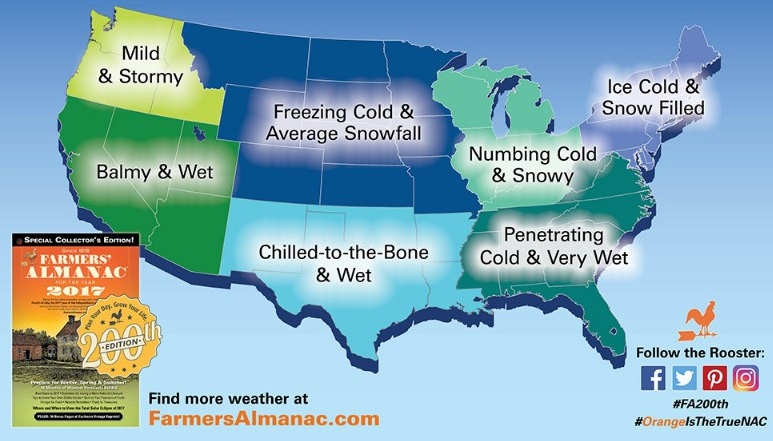WASHINGTON – If you hate winter, then you might want to avoid the newest Farmers’ Almanac long-range forecast.
The 2017 Farmers’ Almanac, released Monday, predicts that the upcoming winter will be far worse than last year’s winter for much of the country. Although such long-range forecasts are sometimes ridiculed by modern-day scientists, many Farmers’ Almanac readers say the forecasts are 80-85 percent accurate, according to officials with the publication.
The long-range forecast uses a nearly 200-year-old formula that is based on math and astronomy.
“While last winter was a reprieve from shoveling and high fuel bills, the party is over,” the Farmers’ Almanac website says. “According to the 2017 Farmers’ Almanac, ‘winter is back!’’”
Get Free Backup Electricity — That Works Even During Blackouts!
A strong El Niño that made last year’s winter rather mild is now gone, says Farmers’ Almanac editor Peter Geiger.
The newest forecast predicts that “exceptionally cold, if not downright frigid weather will predominate over parts of the Northern Plains, Great Lakes, Midwest, Ohio Valley, the Middle Atlantic, Northeast, and New England this winter,” according to the website. Also, “shots of very cold weather will periodically reach as far south as Florida and the Gulf Coast.”
It also predicts “some snow and cold conditions in mid-November in the Northeast, Great Lakes, and Midwest” – although the “frigidly cold temperatures really won’t take hold until much later in the season.”
December and January will bring a “mixed bag of wintry weather.”
“It’s really February when the frigid temperatures take hold (northern tier states could see ambient air temperatures as low as 40 degrees below zero!),” the almanac website says. “This is the month you want to make sure your heat works, your long johns are washed, and your slippers are nearby.”
The Farmers’ Almanac says its weather forecast is based on a “specific and reliable set of rules that were developed back in 1818 by David Young, the Almanac’s first editor.”
“These rules have been altered slightly and turned into a formula that is both mathematical and astronomical,” the website says. ‘The formula takes things like sunspot activity, tidal action of the Moon, position of the planets, and a variety of other factors into consideration.”
 Off The Grid News Better Ideas For Off The Grid Living
Off The Grid News Better Ideas For Off The Grid Living



